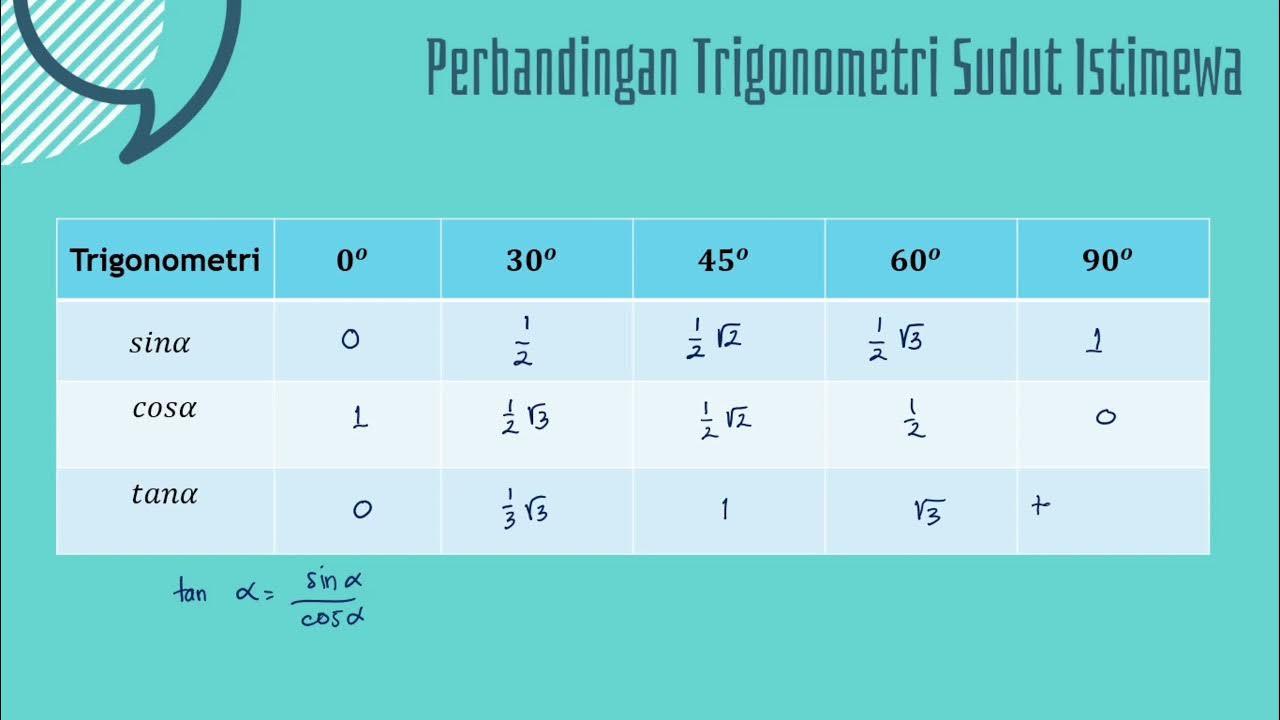a triangle with as many integers as possible
Summary
TLDRThis video explores triangles with integer sides and angles, specifically focusing on cases with integer angles of 60°, 90°, or 120°. The discussion includes the application of the law of cosines, highlighting how a 90° angle leads to Pythagorean triples. The video then focuses on 60° triangles, deriving a parameterization for generating integer-sided triangles with one 60° angle. A detailed example shows how to compute such triangles, resulting in side lengths of 19, 16, and 21. The approach is compared to the parameterization of Pythagorean triples, offering insight into integer angle triangles.
Takeaways
- 😀 The script explores triangles with integer sides and integer angles, focusing on integer angle cases like 60°, 90°, and 120°.
- 😀 The Law of Cosines is used to relate the sides of a triangle to its angles, with a focus on simplifying equations for specific cases.
- 😀 A right triangle with a 90° angle leads to a Pythagorean triple, and the script references previously discussed methods for parameterizing these triples.
- 😀 The only rational values for cosine of an angle in a triangle with integer sides are ±1/2 and 0, corresponding to angles of 60°, 90°, and 120°.
- 😀 Triangles with integer sides and integer angles must have one of the angles as 60°, 90°, or 120°.
- 😀 If a triangle has two integer angles, it is automatically equilateral because the sum of angles must be 180°, resulting in all angles being 60°.
- 😀 For 60° triangles, the cosine of the angle is 1/2, simplifying the law of cosines into a form that can be factored.
- 😀 The script provides a method of splitting equations into factors, which eventually leads to parameterizing 60° triangles with integer sides.
- 😀 The algebraic technique involves setting up equations in terms of rational numbers and simplifying expressions to obtain integer solutions for triangle sides.
- 😀 By choosing appropriate values for variables (q and r), a parameterized family of integer triangles is generated, leading to specific examples such as a triangle with side lengths 19, 16, and 21.
- 😀 While not all 60° triangles are parameterized by this method, it provides a way to generate a subset of integer-sided triangles with a 60° angle.
Q & A
What is the primary goal of the video?
-The main goal of the video is to explore triangles with integer sides and as many integer angles as possible, focusing particularly on cases where one angle is 60°, 90°, or 120°.
Why is the cosine formula important in the context of the video?
-The cosine formula is important because it relates the sides and angles of a triangle, allowing for the exploration of integer side lengths and angles. The video uses it to investigate the properties of such triangles.
What is the significance of the angle being 90°?
-If one of the angles is 90°, the triangle becomes a right triangle, which leads to Pythagorean triples. This is a key concept in understanding integer-sided triangles.
What does the video reveal about triangles with integer sides and integer angles in degrees?
-The video concludes that triangles with integer sides and integer angles in degrees must be equilateral if they have more than one integer angle. Therefore, the primary focus shifts to triangles with one angle equal to 60°, 90°, or 120°.
What happens when the angle is 60°?
-When the angle is 60°, the cosine of the angle is 1/2, which simplifies the formula to a relationship between the sides of the triangle. This results in a form that can be factored to explore possible integer side lengths.
How does the video approach the algebraic manipulation of the cosine formula?
-The video manipulates the cosine formula to create an equation that can be factored, and then further splits the sides into products involving rational numbers, ultimately aiming to generate parameterizations for integer-sided triangles.
What is the role of the rational number 'A' in the derivation?
-The rational number 'A' is used in the derivation to represent a scaling factor for the sides of the triangle, which helps in parameterizing the side lengths in terms of other variables Q and R.
What is the significance of choosing Q and R to be relatively prime?
-Choosing Q and R to be relatively prime ensures that the generated triangle is primitive, meaning the side lengths are coprime and represent the simplest form of the triangle.
How does the video suggest generating integer-sided triangles?
-The video suggests that integer-sided triangles can be generated using a two-variable parameterization based on values of Q and R, which are related through rational multiples. This allows for the creation of triangles with a 60° angle.
What example is provided to illustrate the parameterization method?
-The video provides an example where Q = 2 and R = 3. Using the parameterization formula, it calculates the side lengths of a triangle, resulting in a triangle with sides 19, 16, and 21, with the 60° angle opposite the side of length 19.
Outlines

Esta sección está disponible solo para usuarios con suscripción. Por favor, mejora tu plan para acceder a esta parte.
Mejorar ahoraMindmap

Esta sección está disponible solo para usuarios con suscripción. Por favor, mejora tu plan para acceder a esta parte.
Mejorar ahoraKeywords

Esta sección está disponible solo para usuarios con suscripción. Por favor, mejora tu plan para acceder a esta parte.
Mejorar ahoraHighlights

Esta sección está disponible solo para usuarios con suscripción. Por favor, mejora tu plan para acceder a esta parte.
Mejorar ahoraTranscripts

Esta sección está disponible solo para usuarios con suscripción. Por favor, mejora tu plan para acceder a esta parte.
Mejorar ahoraVer Más Videos Relacionados

When Do I use Sin, Cos or Tan?

Special Triangles (full lesson) | jensenmath.ca

Perbandingan Trigonometri Sudut Istimewa

Kekongruenan dan Kesebangunan [Part 4] - Kesebangunan Dua Segitiga

Vektor Fisika • Part 1: Pengantar Trigonometri Dasar

Matematika kelas 8 | cara menghitung panjang sisi segitiga siku-siku yang memiliki sudut 30° dan 60°
5.0 / 5 (0 votes)
